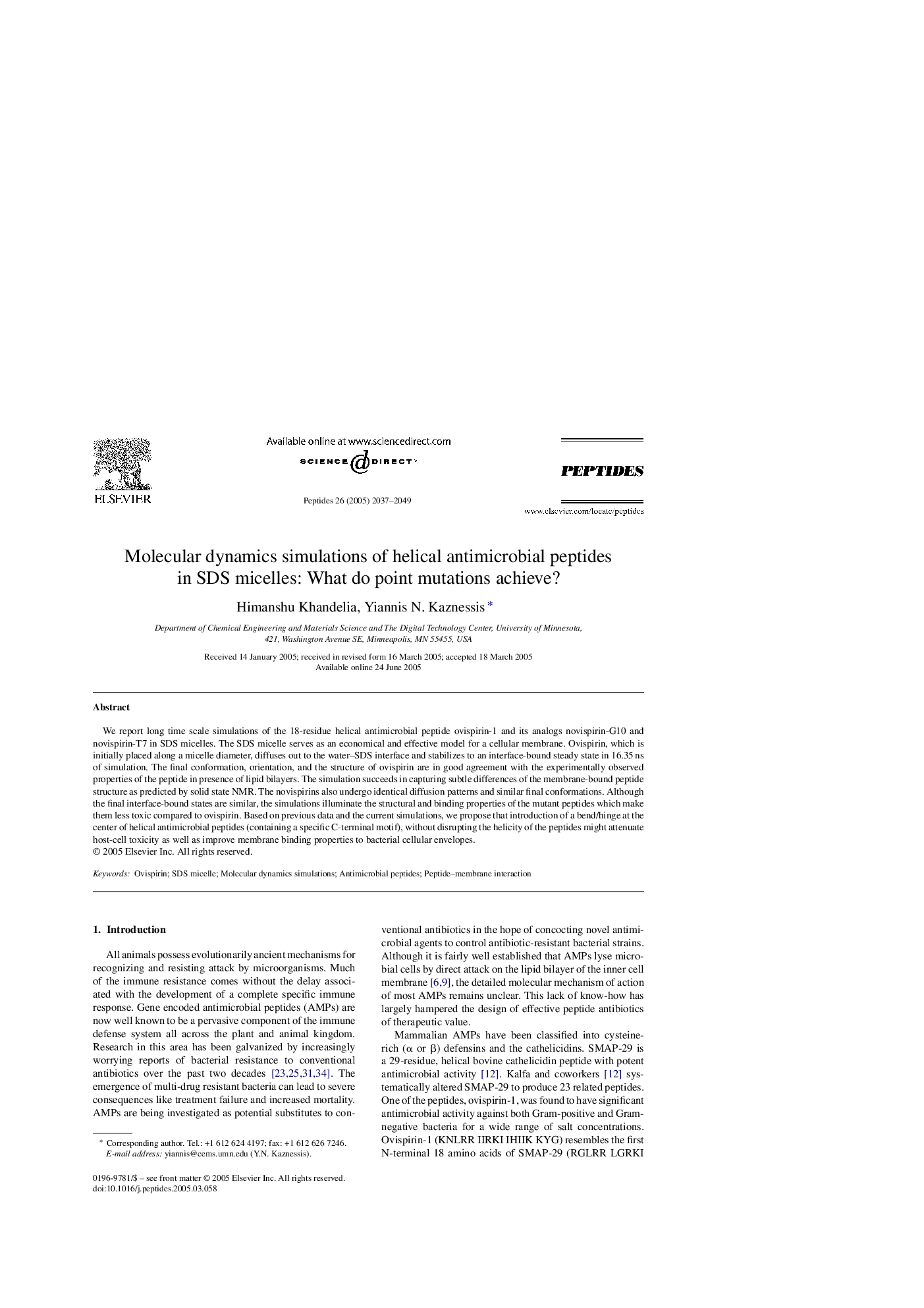| Article ID | Journal | Published Year | Pages | File Type |
|---|---|---|---|---|
| 2008760 | Peptides | 2005 | 13 Pages |
We report long time scale simulations of the 18-residue helical antimicrobial peptide ovispirin-1 and its analogs novispirin-G10 and novispirin-T7 in SDS micelles. The SDS micelle serves as an economical and effective model for a cellular membrane. Ovispirin, which is initially placed along a micelle diameter, diffuses out to the water–SDS interface and stabilizes to an interface-bound steady state in 16.35 ns of simulation. The final conformation, orientation, and the structure of ovispirin are in good agreement with the experimentally observed properties of the peptide in presence of lipid bilayers. The simulation succeeds in capturing subtle differences of the membrane-bound peptide structure as predicted by solid state NMR. The novispirins also undergo identical diffusion patterns and similar final conformations. Although the final interface-bound states are similar, the simulations illuminate the structural and binding properties of the mutant peptides which make them less toxic compared to ovispirin. Based on previous data and the current simulations, we propose that introduction of a bend/hinge at the center of helical antimicrobial peptides (containing a specific C-terminal motif), without disrupting the helicity of the peptides might attenuate host-cell toxicity as well as improve membrane binding properties to bacterial cellular envelopes.
